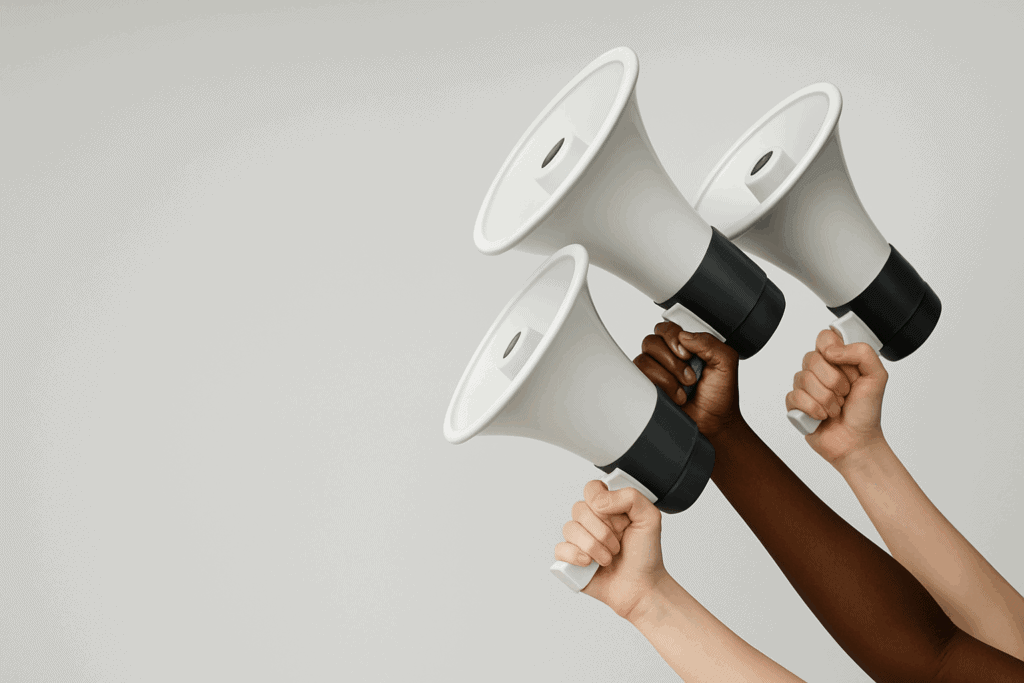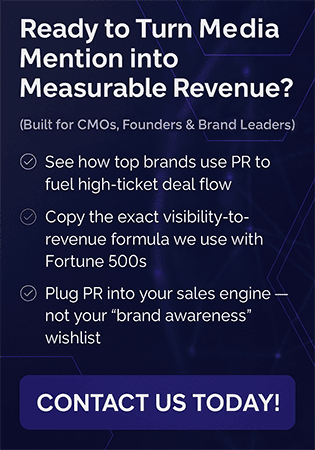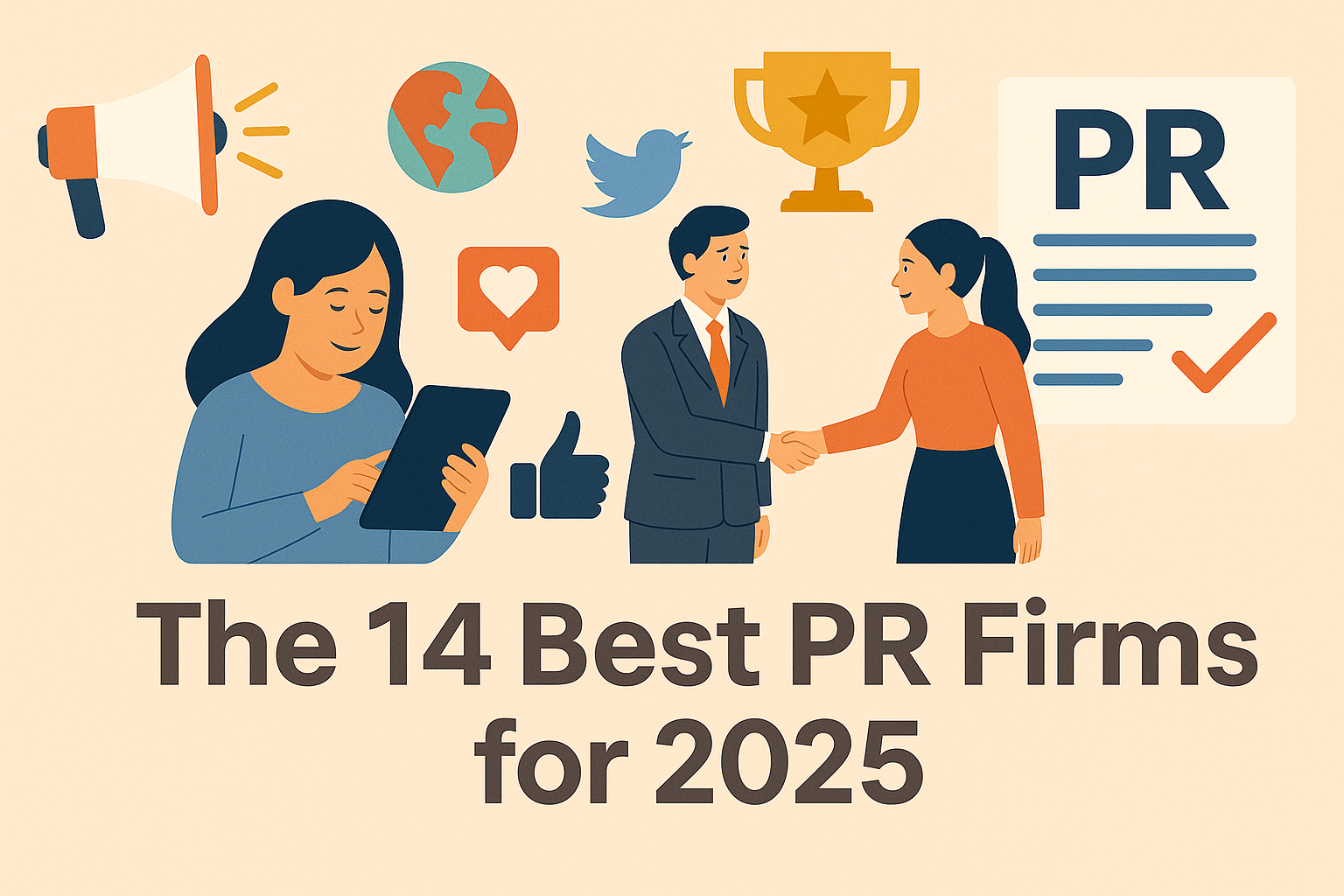Why “Just Sending Press Releases” Isn’t PR
If you still think public relations is about blasting out a press release and hoping someone bites, you’re already behind. That old model, the one where you send the same announcement to a hundred media and influencer contacts and pray, belongs to an era when inboxes weren’t overflowing, and the media landscape wasn’t fractured into thousands of micro-audiences.
Today, PR isn’t about flooding the world with your message. It’s about earning the right to be part of the conversation and making sure that conversation happens where it matters most to your business.
I’ve seen companies burn through tens of thousands of dollars sending beautifully formatted, perfectly edited press releases that landed with a thud. No coverage, no calls, no impact. Why? Because the story wasn’t relevant to the audience. It wasn’t timely. It wasn’t built to resonate with the right people.
The real work of PR starts long before you even think about writing a release. It begins with understanding why anyone should care, who needs to hear it, and how you can build a relationship with them so your message doesn’t feel like spam—it feels like news.
In my experience, the brands that win in PR aren’t the loudest. They’re the most intentional. They know that every interaction, whether it’s a formal interview or a casual comment on LinkedIn, either builds or erodes trust. They treat PR as a long-term investment in credibility, not a quick hit of attention.
This article is about that shift. I’m going to walk you through how to build a PR strategy that works in the real world, not just on paper. We’ll talk about crafting stories people actually want to share, finding the channels where your voice will carry, and making sure every media win drives your business forward—not just your ego.
Start With the Story You Want the World to Tell About You

Every company already has a story in the market—whether they realize it or not. If you’re not shaping it intentionally, it’s being shaped for you by customer reviews, competitor claims, and whatever narrative happens to stick the first time someone Googles your name.
Before you even think about outreach, you have to decide what you want that story to be. And no, this isn’t the fluffy “About Us” paragraph on your website. This is the distilled, repeatable narrative that frames you in every conversation, every interview, and every mention.
The best PR stories don’t start with what you sell. They start with why you exist and why it matters right now. The “right now” part is what most companies miss—they tell a story that could have been told five years ago and then wonder why nobody’s listening.
When I work on PR strategy, I’ll often ask founders and executives, “If an influencer contacts had 10 seconds to describe you to their audience, what would you want them to say?” Most can’t answer without rambling. That’s a problem. If you can’t clearly articulate your story in one or two crisp lines, you can’t expect the market to do it for you.
And here’s the kicker—your story isn’t just for the press. It’s for your customers, your team, your partners, and your investors. If it doesn’t resonate internally, it won’t hold up externally. The most effective PR strategies are built on a story that everyone inside the company can repeat without hesitation and with conviction.
Once you have that story, every PR move becomes sharper. You know which publications are worth your time. You know what angles to pitch. You know how to respond when a media or influencer contact asks, “So why should our audience care?”
Map the Audiences That Matter Most (And Forget the Rest)

One of the quickest ways to waste a PR budget is to aim for “everyone.” It’s tempting, especially if you’ve built something you believe in, to think the whole world should know about it. But in reality, the world doesn’t buy from you. Specific people do. Specific industries. Specific decision-makers.
In PR, relevance beats reach every time. Getting a mention in a national paper might impress your uncle, but if your customers are CTOs in the energy sector, that article in The Wall Street Journal won’t drive the same action as a feature in an industry-specific engineering magazine read by 90% of your target market.
The first step is to map the real circles of influence for your brand:
- The industry insiders who can vouch for your credibility.
- The media outlets your buyers actually read during their workday.
- The online communities and professional groups where your name should naturally appear.
We’ve seen companies triple their PR ROI just by shifting their focus from broad, high-profile mentions to deep saturation in the channels that actually move their audience. It’s not about being everywhere, it’s about being unavoidable where it counts.
And here’s the nuance most people miss: your PR audience isn’t just potential customers. It’s investors, industry analysts, strategic partners, and even top-tier recruits you want to hire. They all shape the opportunities that come your way. The question is, if they heard about you tomorrow, what would you want them to hear—and where would you want them to hear it?
This clarity becomes your filter. Every pitch, every media list, and every speaking opportunity goes through the same test: Will this reach the people who can actually move the business forward? If the answer is no, you save your energy for the ones that will.
Define What “Winning” Looks Like Before You Start

One of the most dangerous mistakes in PR is launching into activity without knowing what success actually means. If your goal is simply to “get more coverage,” you’ll find yourself chasing headlines that feel good but do nothing for the business.
Before you send a single pitch, you have to answer a harder question: What would make this PR effort undeniably worth the time, money, and energy?
For some companies, winning might mean securing regular placement in top-tier trade publications that directly influence buyers. For others, it might mean driving qualified referral traffic from media mentions to a landing page that converts, but for startups in fundraising mode, the win might be measured in inbound investor inquiries triggered by press coverage.
The key is to define metrics that connect PR to business outcomes:
- Share of voice in your industry compared to competitors.
- Media coverage in outlets that your target audience actually reads.
- Backlinks from earned media that improve your search visibility.
- Positive shifts in sentiment when your brand is mentioned online.
- Increased credibility that shortens sales cycles because prospects “already know you.”
You also need to decide on timeframes. A single media hit won’t change the game; it’s the cumulative effect over quarters or years that builds a lasting reputation. That means your definition of winning should include both short-term indicators (press inquiries, immediate traffic spikes) and long-term positioning goals (being quoted as the go-to expert in your field).
If you can’t measure it, you can’t manage it. And if you can’t tie it back to the business, it’s just noise.
Why PR Strategy Now Includes Answer Engine Optimization (AEO)
In 2025, winning at PR isn’t just about showing up in Google search results—it’s about being referenced when someone asks a question in AI-powered tools like ChatGPT, Perplexity, Gemini, or Anthropic Claude. These “answer engines” now shape buying decisions by delivering conversational, trusted answers to millions of queries every day.
Every credible mention of your brand in authoritative media, industry reports, and high-trust sites becomes training data for these AI models. That means your PR wins don’t just drive clicks—they influence whether you’re the name people hear when they ask for recommendations in your category.
We call this Answer Engine Optimization (AEO): the discipline of ensuring your brand is visible, quotable, and linked in the sources AI uses to build answers. A strong PR strategy today builds both human trust and AI trust—so that you’re not only found in search, but featured in the answers your audience sees first.
Build Your Message Pillars – The Spine of Your PR Efforts
If your PR strategy is the stage, your message pillars are the script you never deviate from. They’re the foundation that makes sure everything you put into the world—press releases, interviews, keynote speeches, even casual comments on LinkedIn, reinforces the same core truths about your brand.
Without message pillars, companies fall into a dangerous pattern: every pitch, every article, every social post feels disconnected. Media and influencer contacts can’t summarize what you stand for, customers get mixed signals, and over time, your brand presence becomes noise instead of authority.
Strong message pillars do three things:
- They define what you want to be known for. Not in marketing jargon, but in plain language that anyone can repeat.
- They connect directly to audience needs and current market conversations. A pillar that doesn’t resonate externally is just a slogan.
- They create consistency without sounding scripted. This isn’t about repeating the same sentence word-for-word—it’s about reinforcing the same ideas in different ways.
For example, if you’re a manufacturing tech company, your pillars might be
- Your ability to cut production lead times in half.
- Your role in helping factories meet new sustainability regulations.
- Your proven track record of integrating with legacy systems without disruption.
Everything you say publicly should tie back to one or more of those pillars. Over time, they become shorthand for your expertise—so when a media and influencer contact or analyst thinks of your name, they instantly know the themes you can speak on.
The goal isn’t to be memorable for everything. It’s to be unforgettable for a few things that matter most.
Identify the Media & Channels That Will Carry Your Story

Once you know your message pillars, the next step is figuring out where those messages will actually land. Too many companies build their PR plan backwards—they start with a random media list or a vague idea of “getting in the news,” then try to jam their story into whatever space they can find. That’s a waste of time and credibility.
The better approach is to reverse-engineer your media presence from the audiences you’ve already mapped. Where do they spend their attention? Who do they trust? What channels shape their decisions?
For some brands, the goldmine isn’t a national outlet at all, it’s a trade publication that every buyer in your industry reads during their Monday morning coffee. For others, it’s being a regular guest on niche podcasts that get passed around Slack channels inside your target companies.
And don’t overlook platforms outside traditional media. A well-timed LinkedIn post can do more to shape your reputation than a news article if it sparks conversation among the right people. Industry webinars, online forums, and influencer collaborations can carry your message further and deeper than you think—if they’re chosen strategically.
This is also where relationship-building becomes critical. You’re not just “finding” media channels; you’re identifying people like editors, media and influencer contacts, podcast hosts, and community leaders who can amplify your story because they believe it matters. The earlier you start building those relationships, the less your outreach will feel like cold pitches and the more it will feel like contributing to an ongoing conversation.
The goal isn’t to be everywhere, it’s to be unmissable in the places that matter most.
Develop the Content Engine Behind Your PR

Media attention doesn’t magically appear just because you have a good story. Even the most newsworthy ideas need something tangible—proof points, visuals, and expert voices—that make them easy for media and influencer contacts to run with and for audiences to engage. Without this, you’re asking people to do the heavy lifting for you, and in today’s crowded attention economy, they won’t.
The smartest brands treat content as the scaffolding for their PR efforts. Every announcement, every commentary, and every outreach is supported by material that makes the story real and irresistible to share. And it usually comes down to three essential types of content, each with its own power.
Owned Content – Your Thought Leadership Library
Owned content is your permanent record—the ideas, data, and insights you control completely. Think industry reports, blog posts, research findings, white papers, and opinion pieces. These aren’t ads; they’re contributions to your industry’s conversation. A well-researched report can be quoted for years. A sharp op-ed can position you as a go-to authority long after its publish date. And when media and influencer contacts need credible sources, your owned content becomes the reference they turn to.
Expert Resources – Your Human Advantage
Data alone doesn’t sell a story—people do. Expert resources are your media-ready voices: your CEO, engineers, product leads, or even customers who can speak in plain, memorable language. Media and influencer contacts want voices that can offer context, explain complex ideas, and add a human angle to a story. If your team can deliver thoughtful, quotable insights on demand, you’re no longer just pitching—you’re becoming part of their speed dial.
Visuals – The PR Multiplier
A strong visual can do what paragraphs of text can’t—it makes people stop scrolling. Infographics that simplify dense data, clean product photography, short explainer videos, and behind-the-scenes clips can all make your story instantly more publishable. Media and influencer contacts love assets that save them time; if you hand them something polished and ready-to-use, your chances of being featured go way up.
The real magic happens when these three content types work together. A data report (owned content) becomes the basis for a CEO interview (expert resource) supported by a set of infographics (visuals). That’s not just a press release—that’s a complete media package that tells a story from every angle.
The point is to make it effortless for others to tell your story. The more polished, accessible, and media-friendly your content is, the more likely it will be picked up, quoted, and shared—and the more control you’ll have over how it’s told.
Timing & Newsworthiness – How to Stop Pitching When Nobody Cares
You can have the perfect story, beautifully packaged with visuals, quotes, and data… and still watch it go nowhere. Why? Because PR isn’t just about what you say—it’s about when you say it.
Newsrooms and audiences are ruled by cycles. Some are predictable—industry conferences, quarterly earnings seasons, and regulatory updates. Others are unpredictable, sudden market shifts, viral stories, and breaking news that hijacks the conversation for days. If you pitch during the wrong moment, your story gets buried under bigger headlines.
The best PR operators know how to play both games. They plan for the predictable and react to the unexpected. If you know your industry’s annual event calendar, you can time announcements for when media attention is already primed. If you’re monitoring news trends in real time, you can “newsjack”—jump into a hot story with relevant, valuable insight—without looking opportunistic.
And here’s the hard truth: not every internal milestone is newsworthy. Your product update might excite your team, but unless it ties to a broader trend or solves a pressing market problem, the outside world won’t care. PR requires asking a tough question before every pitch—Why now? If you can’t answer that convincingly, you either need to reframe the story or wait until the timing works in your favor.
The companies that consistently win media coverage aren’t just better storytellers—they’re better at reading the room. They respect the media and influencer contacts’ reality, the audience’s attention span, and the calendar’s influence on what gets covered. That’s not luck. That’s discipline.
Outreach That Doesn’t Get Deleted

Most media and influencer contacts’ inboxes are war zones—hundreds of emails a day, all competing for a few seconds of their attention. If your pitch looks like a mass blast or feels like you didn’t bother to understand their work, it’s gone before they even hit the second sentence.
The secret to getting noticed isn’t fancy formatting or “trick” subject lines. It’s relevance, respect, and restraint.
1- Start with the human connection. If you’ve read their recent work, reference it in your opening. Not in a fake, “I loved your piece” way, but in a way that shows you actually paid attention:“Your recent article on supply chain resilience highlighted the same challenge we’ve been tackling with our clients in aerospace manufacturing…”
2- Lead with the hook, not the history. Your first two lines should tell them why their audience will care about this story now. The background can come later. Remember, they’re not here to tell your story—they’re here to tell a story that fits their beat.
3- Make it easy to say yes. Include the essentials: the who, what, why, and why now. Offer a clear next step—an interview slot, a data set they can review, or a press kit link. Don’t make them chase you for details you should have given upfront.
And above all, respect their time. If you follow up, do it with purpose—either by adding a new angle or by connecting the pitch to fresh developments. Bad follow-ups feel like harassment; good follow-ups feel like service.
A pitch that works feels less like a cold email and more like an invitation to collaborate on something meaningful. That’s how you get opened, remembered, and called back the next time they need an expert voice.
Squeezing Every Drop From PR Wins—and Knowing If They’re Working
A media placement is not the finish line. It’s the starting point for amplification, testing, and refinement. The companies that truly win at PR don’t just celebrate coverage—they work it into every layer of their business, then study the results so the next win is even bigger.
Turn One Hit Into Ten Touchpoints
When you land a great placement, think of it as raw material, not a one-off event. Share it with your team so sales, recruiting, and leadership can use it in conversations. Break it down into smaller assets—a LinkedIn carousel, short video clips, and a blog post diving deeper into the topic. Link to it in your email signature. Include it in proposals. Let it live beyond its publish date.
Good PR teams think like syndicators: the more places a story appears, the more weight it carries. And when a prospect sees the same credibility markers across multiple channels, the trust gap shrinks fast.
Measure What Actually Matters
Not all PR impact shows up in clicks the next day. Some of it is about perception shifts and authority building over time. That’s why you need to track both immediate performance metrics—referral traffic, backlinks, social engagement—and long-term indicators like share of voice, sentiment change, and inbound opportunities that reference your media presence.
If you notice a certain outlet, message pillar, or format consistently outperforms others, double down. If something isn’t moving the needle, drop it. PR is too resource-intensive to run on autopilot.
By combining amplification with measurement, you turn PR into a compounding asset instead of a string of isolated wins. Each new placement doesn’t just add attention—it makes the next one easier to land, more impactful when it hits, and more valuable to the business overall.
Quick-Start Guide to Building PR That Works

Define Your Core Story
One sentence that positions you clearly in the market — think “reputation elevator pitch.”
| Element | Your Answer | Example |
| Why we exist | __________ | “To make renewable energy affordable for every homeowner.” |
| Why now matters | __________ | “Climate urgency and rising energy costs make adoption critical in 2025.” |
| Proof we deliver | __________ | “Over 500 installations completed with a 98% customer satisfaction rate.” |
Tip: If you can’t say it clearly in one breath, the market won’t remember it.
Target the Right Audience
Focus your outreach where it drives action, not vanity.
| Audience | Example | Priority (1–5) |
| Buyers | CTOs in manufacturing | 5 |
| Industry Media | IndustryWeek, Manufacturing Today | 4 |
| Investors | Clean energy venture funds | 3 |
Rule: If a channel won’t reach buyers, decision-makers, or influencers, skip it.
Set Success Metrics
Tie PR goals to measurable business outcomes.
| Goal | Target | Timeframe | Example |
| Placements in target outlets | 3 / quarter | 6 months | “3 features in top-tier industry trades” |
| High-authority backlinks | 10 total | 12 months | “Earned from outlets with DA 60+” |
| Share of voice | 15% | 9 months | “Outpace competitor media presence by 5%” |
Tip: Track monthly progress so you can pivot early if coverage isn’t hitting KPIs.
Build Your PR Positioning Map
Lock in the themes, proof points, and talking angles that make you the go-to voice in your space.
| Positioning Area | Description | Supporting Proof |
| Core Theme 1 | __________ | Case study, stat, award |
| Core Theme 2 | __________ | Research data, testimonial |
| Core Theme 3 | __________ | Media coverage, analyst quote |
Check Before Using:
☐ Relevant to audience needs
☐ Tied to current trends or conversations
☐ Backed by verifiable proof
☐ Clearly different from competitors
Quick Outreach Checklist
Every pitch you send should pass this test:
☐ Personalized intro referencing their recent work
☐ Strong “Why now?” hook linked to audience relevance
☐ Clear takeaway or benefit for their audience
☐ One simple next step (interview, data access, press kit link)
Amplify Every Win
One mention can become ten marketing assets if repurposed smartly.
☐ Share coverage internally for sales/recruitment use
☐ Repurpose into LinkedIn posts, short videos, newsletters
☐ Add to proposals, pitch decks, email signatures
☐ Send to investors, partners, and key prospects
Pro Tip: Your best PR asset isn’t just a headline—it’s the credibility it creates everywhere your audience encounters you.
PR as a Long Game of Trust, Not a Quick Hit
The companies that see PR as a one-off campaign always end up chasing the next “big moment” because the last one fades too quickly. The companies that win? They treat PR as a trust-building engine—a consistent, intentional presence in the conversations that matter most to their audience.
Every headline, every interview, every mention is a small deposit in your credibility bank. Over time, those deposits compound. Media and influencer contacts start coming to you for quotes. Industry peers start mentioning you without prompting. Prospects feel like they already know you before the first sales call. That’s when PR stops being a marketing expense and starts becoming a growth asset.
If you’re approaching PR just to “get your name out there,” you’re aiming too low. The real goal is to get your name in the right places, for the right reasons, in the right way—so that each piece of coverage is not only seen but trusted, shared, and acted on.
This isn’t about chasing attention. It’s about earning authority. And if you build your PR strategy with that mindset, you won’t just win headlines—you’ll own your space in the market.
If you want your PR efforts to do more than make headlines, the next step is clarity. We can help you see where your brand stands today, both in the media and in AI-generated search results, and outline the moves that will strengthen your position.
Request a PR + AI Visibility Review and get a clear, actionable view of how to put your story in the right conversations, consistently.





